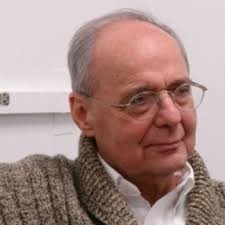
Dr. Marcel Kinsbourne, an eminent, highly distinguished pediatric neurologist and cognitive neuroscientist, died on April 21, 2024 at the age of 92. He made fundamental and far reaching contributions to the fields of neurology, psychiatry, psychology and neuropsychology.
Dr. Kinsbourne was born in Vienna in 1931. When he was eight years old, he and his parents escaped to England, fleeing the Nazis four days before the border was closed. He received his B.A., M.A., and Doctor of Medicine degrees at Oxford University. Following this, he completed his training and worked in the US at Duke University Hospital, the Hospital for Sick Children in Toronto and the University of Toronto. He moved to Massachusetts in 1980, where he was Director of the Behavioral Neurology Research Division at the Eunice Kennedy Shriver Center. He held academic positions, among others, at Harvard Medical School, Boston University, Brandeis University and Tufts University, and was co-chair of the Psychology Department at the New School in NY.
Dr. Kinsbourne was a President of INS, as well as the Society for Philosophy and Psychology. He published numerous books and hundreds of scholarly articles and served on the Editorial Board of numerous journals. Dr. Kinsbourne discovered two pediatric diseases, one named for him (Kinsbourne Syndrome or Dancing-Eyes Dancing Feet) and one he named for a former mentor (Sandifer Syndrome).
Dr. Kinsbourne made fundamental contributions not only to medicine, but to neuropsychology, many of which are insufficiently recognized as his contribution. For example, he pioneered the use of dual task paradigms, which are so ubiquitous now, hypothesizing that the closer cerebral areas or network nodes were that were essential to two tasks, the more interference there would be.
It is not possible to single out other landmark papers because there were so many, of which some were original data papers while some posited strikingly original and brilliant theoretical contributions. Just to name a few areas in which his contributions were seminal: with his close friend, the late Daniel Dennett, he wrote on the neurological basis of consciousness, rejecting the popular idea of the “Cartesian theatre”, and positing that “To regard consciousness as arising from brain activity by some esoteric transformation is misconceived…. … A representation anywhere in the forebrain could on one occasion enter consciousness and on another remain outside it, depending on whether it is, perhaps by temporal coherence of discharge of cell assemblies, integrated into the dominant focus”.
Dr. Kinsbourne wrote the only coherent and well supported theory of why the nervous system in vertebrates, including mammals, is decussated; this was published in 2013 in Neuropsychology. Another original idea was that contrary to the general viewpoint, he held that single modality areas of cortex (e.g. visual cortex) are not less evolutionarily developed, but are more highly developed, with cross-modal areas that respond to multiple types of inputs being seen in animals with less developed higher cognitive functions. His strikingly original thinking is seen in many papers, including much cited papers on semantic memory and state-dependent learning, and was evident in many stimulating conversations that could change one’s thinking in the blink of an eye (one colleague was describing to him a child referred to them as having ADHD, but seeming to the colleague as having a personality disorder, to which Marcel responded “ADHD is a personality disorder.”) Relatedly, he defined a new subtype of ADHD, that of the overfocussed individual, which led to theoretical contributions on the nature of autism. His view of lateralized attention was not the rather static classical view of each hemisphere preferentially attending to the opposite side of space but of each hemisphere driving attention toward the contralateral space in a dynamic and interactive fashion, leading to unilateral lesions having a continuum of possible neglect manifestations.
Marcel was not only an original, profound, and knowledgeable intellect, but a loving and generous family man and mentor, with a wonderful sense of humor. He loved talking to graduate and medical students and postdoctoral fellows who took any opportunity to question him eagerly about difficult clinical and theoretical issues. He was a devoted husband to his wife, Caroline; and a proud father to his seven children, David, Daniel, Jeremy, Emily, Isabelle, Madeleine and Charlotte and his 11 grandchildren. He is intensely missed not only by his family, but by his friends, colleagues, and trainees. We are grateful to have benefited from his brilliance and knowledge and his influence on our field will only grow as new generations are acquainted with his work.